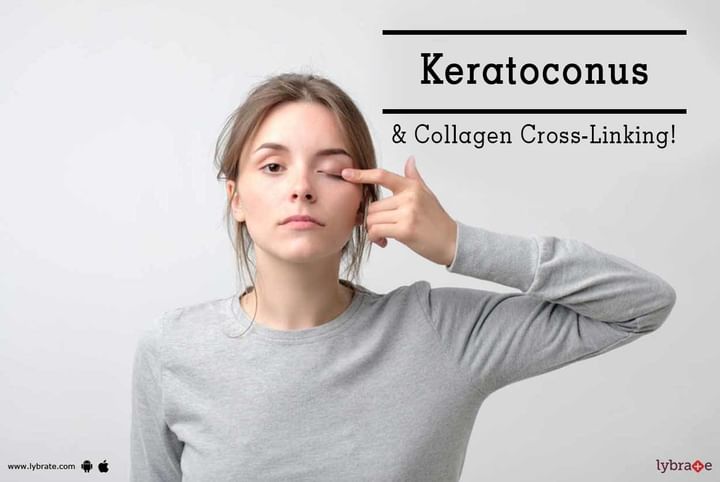Keratoconus & Collagen Cross-Linking!
Keratoconus is a progressive eye disease that changes the shape of the cornea. The cornea is the eye’s protective layer that covers the optical apparatus of the eye. It allows vision by permitting the light to enter the eye. The cornea is round in shape. But sometimes, it gets thin and bulges out to form a cone shape. This change in shape deflects the light entering the eye. It leads to blurred or distorted vision or both. It might also cause nearsightedness, astigmatism, light sensitivity, and glare. This condition is called Keratoconus.
It can affect either the eyes or just one eye. Usually, it begins at a young age, in teens or early twenties. It is believed that Keratoconus is caused due to an imbalance in the enzymes of the cornea, causing it to deteriorate and get weak.
Keratoconus is associated with excessive rubbing of the eye, chronic irritation, poorly fitted contact lenses, and overexposure to ultraviolet rays. The disease, when not too severe, can be managed (not treated) using regular soft lenses and eyeglasses. However, as the disease progresses, these devices remain inadequate in correcting the vision. In such cases, a surgical therapy called Collagen Cross-Linking is employed to correct the vision.
Collagen Cross-Linking:
Corneal collagen cross-linking is a surgical therapy which uses a photosensitizer and ultraviolet light to form stronger chemical bonds in the cornea. This treatment halts irregular and progressive changes (ectasia) in the shape of the cornea. Ectatic changes are marked by thinning of the cornea and an increase in the curvature. It causes myopia and astigmatism.
Collagen cross-linking allows collagen fibrils to chemically bond strongly with the adjacent fibrils. It is a relatively non-invasive procedure that stabilizes the cornea. This significantly reduces the need for corneal transplants for patients suffering from Keratoconus.
The Procedure:
Performed under topical anesthesia, the patient lies down in the sterile operating room. The patient's epithelium of the cornea is removed gently. Then, Riboflavin solution is applied at an interval of five minutes for the first half an hour. It is followed by exposing the patient’s cornea to ultraviolet light for nearly half an hour. Thus, the procedure lasts for almost an hour and is painless. The eye is patched at the end of the treatment.
Types of Collagen Cross-Linking:
There are two types of Collagen Cross-Linking: epithelium - on and epithelium - off.
-
Epithelium - on or transepithelial crosslinking is the procedure in which the outer layer of the cornea (epithelium) is left intact. It hence requires more time for riboflavin penetration but causes less discomfort, less risk of infection, and faster recovery.
-
Epithelium - off requires the removal of the epithelium to allow entry and penetration of riboflavin into the cornea.
Who can Undergo Collagen Cross-Linking?
-
It must be established that the patient is suffering from progressive Keratoconus.
-
The thickness of the cornea must be at least 400 microns.
-
The patient should not be nursing or pregnant.
Post the Procedure:
-
Work can be resumed within three to four days after the procedure.
-
Water should be avoided from entering the eye for almost a week.
-
Contact lenses can be used for six weeks after the treatment.
-
The surgeon assesses healing daily for the first two to three days until the epithelium heals completely.
-
Eye drops prescribed by an ophthalmologist or surgeon have to be used for almost four months.
-
Following up with the doctor should be scheduled for six weeks, three months, six months, and one year after the procedure.
-
Also, if there is any pain or irritation or distorted vision, the same should immediately be reported to the doctor.
Take Away:
Although the method is quite popular and effective, it is advisable to always consult a doctor before going for this method.



+1.svg)
